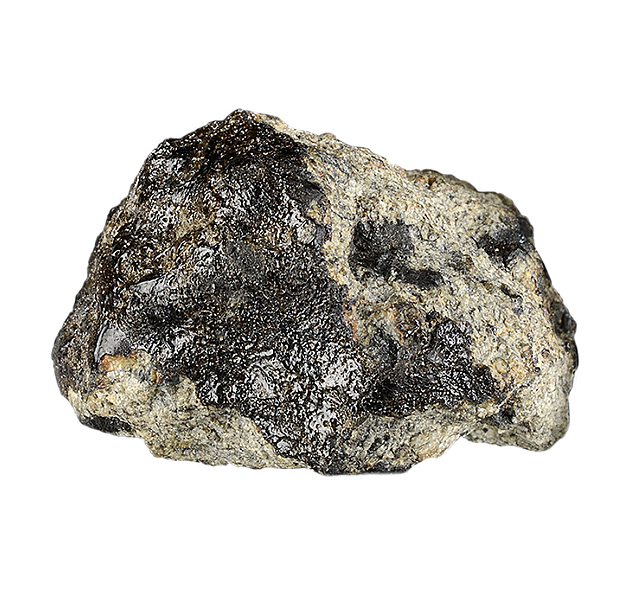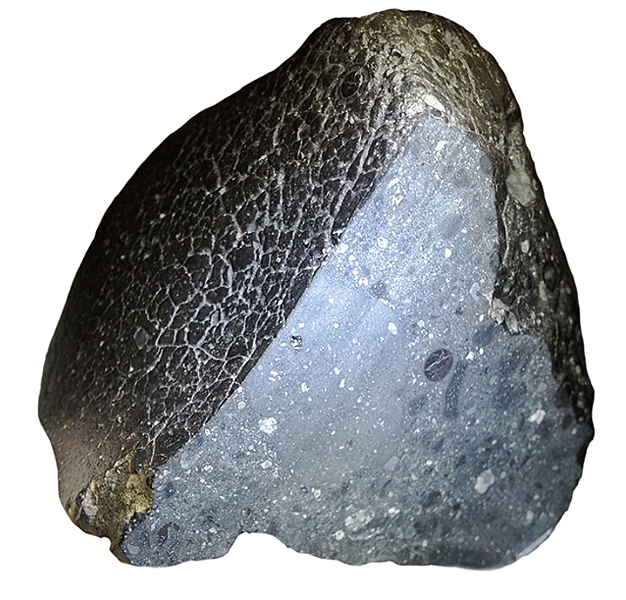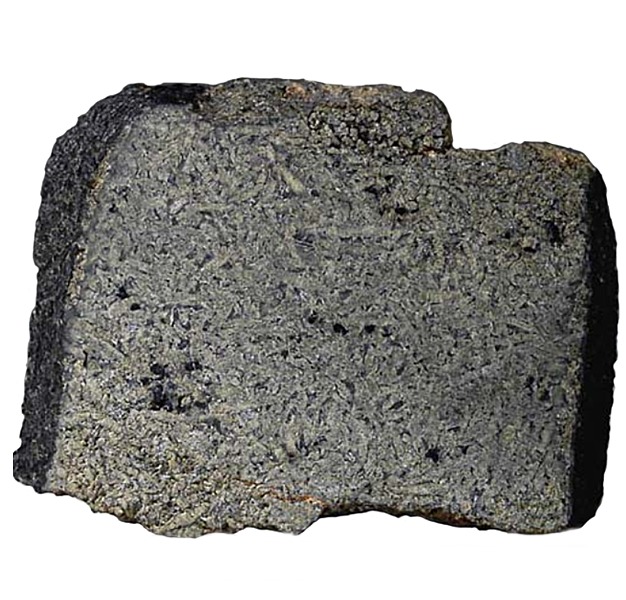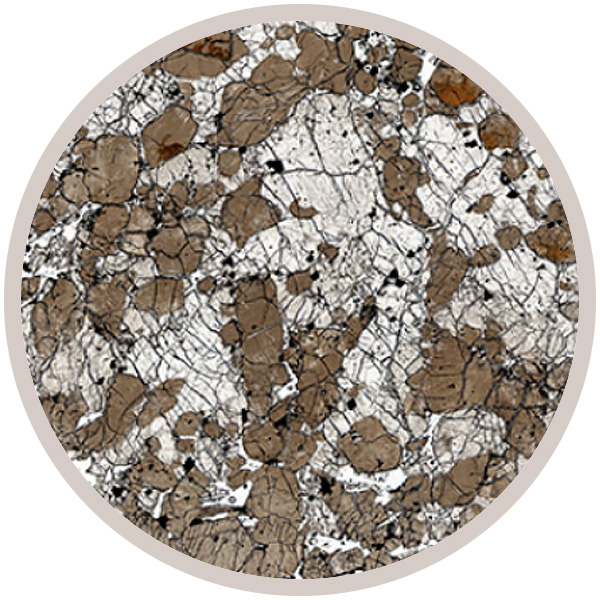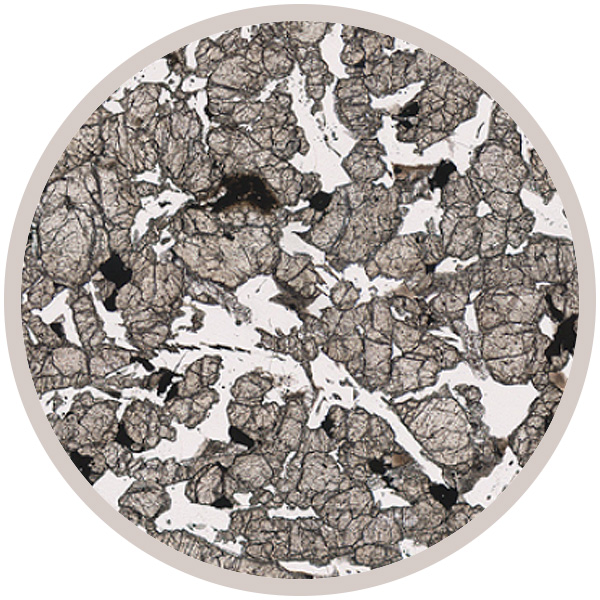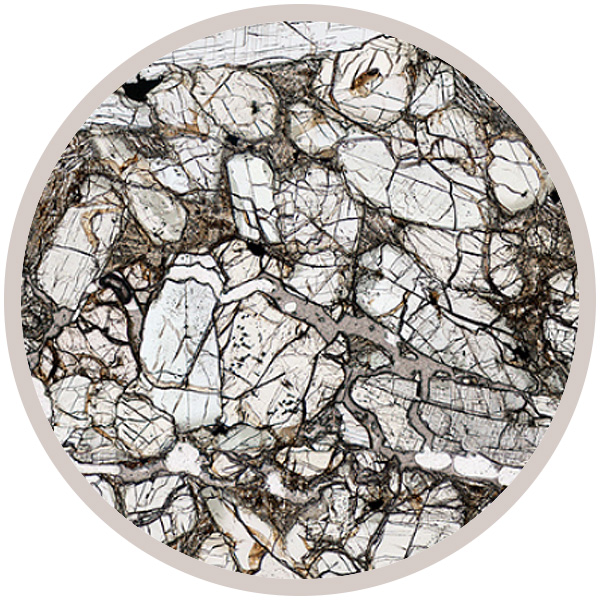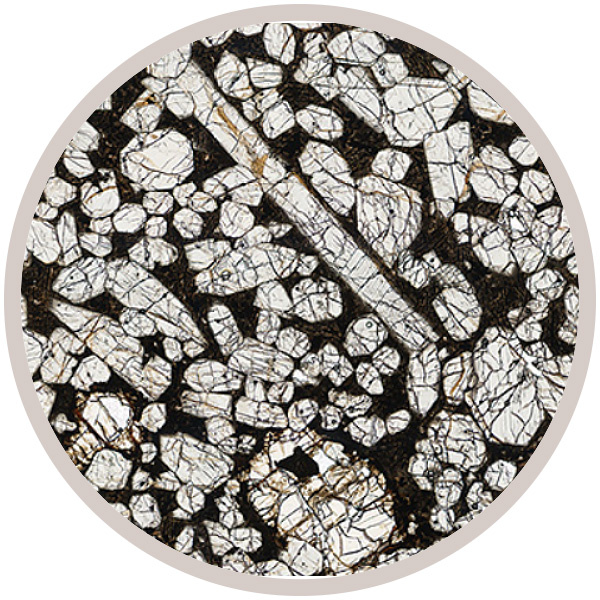
Fact sheet
MIL 03346 was recovered from blue ice on December 15th 2003 in the Miller Range, Antarctica. Its weight is 715 grams and about 60% of its surface consists of wrinkled fusion crust. It is a nakhlite that appears to be from the same lava flow as the other nakhlites, but it has had a faster cooling rate than the others. MIL 03346 has been dated by three different isotopic techniques: Ar/Ar 1.44 ± 0.02 b.y.; Rb/Sr 1.29 ± 0.12 b.y.; Nd/Sm 1.36 ± 0.03 b.y.
The meteorite mainly consists of pyroxene (augite) with rare olivine set in a fine-grained interstitial glassy mesostasis. Many of the crystals are well-formed (euhedral) indicating crystallization prior to eruption. Melt inclusions are found in the augite and olivine, and have been shown to contain jarosite, saponite and Cl-rich amphibole. Olivine crystals have Fe-rich rims. Devitrification of the glass has produced dendritic intergrowths of olivine (fayalite), Ti-magnetite, ferro-hedenbergite, cristobalite, apatite and feldspar glass.
Alteration of MIL 03346 has produced iddingsite-smectite within fractured olivine and gypsum has been noted in cracks, veins and voids throughout the meteorite.
This description draws on the work of NASA scientist Charles Meyer - compiler of The Mars Meteorite Compendium. A pdf document describing MIL 03346 is available.
This collection of meteorites includes Shergottites, Nakhlites and Chassignites (or SNC meteorites) which originate from the surface of the planet Mars.
They carry unique signals of the surface of the planet that allows scientists to study the composition and age of Martian rocks. The collection includes a sample of the famous ALH84001 meteorite, evidence from which was used in 1996 to begin the debate of 'life on Mars?'.

